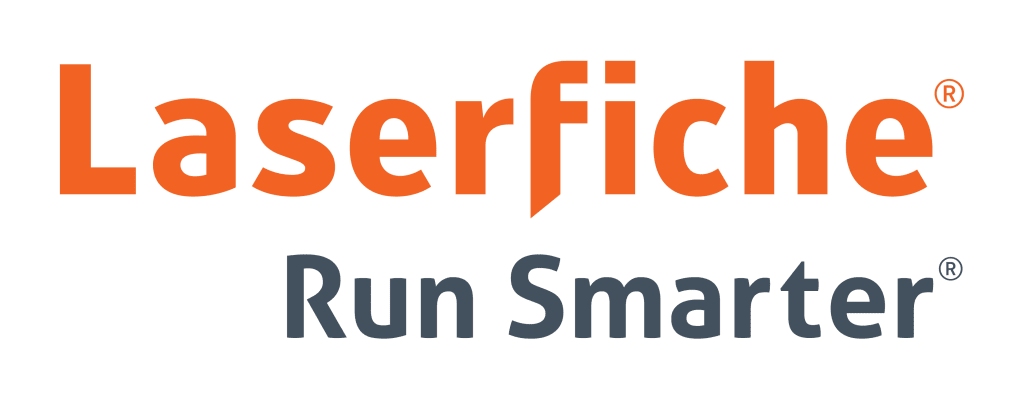
Metadata: How it works and how Laserfiche Cloud can help your organisation with Records Management and Document Management.
In today’s digital age, the amount of information and data that organisations generate and manage is increasing rapidly. This has made it essential for organisations to have efficient records management and document management systems in place. One critical aspect of these systems is metadata, which helps organisations to better organise, manage, and use their information assets. In this blog post, we will explore what metadata is and how it and Laserfiche Cloud can help your organisation with records management and document management.
What is Metadata?
Metadata is simply data that describes other data. It is often referred to as “information about information.” Metadata provides context to data, making it easier to organise, manage, and use. It can be used to describe various types of data, including documents, images, videos, audio files, and more.
Metadata can be broken down into several categories, including:
Descriptive metadata: This includes information such as title, author, date, and keywords.
Structural metadata: This includes information about the organisation of the data, such as the page numbers in a document or the chapters in a book.
Administrative metadata: This includes information about the data’s management, such as who created it, who has access to it, and how long it should be retained.
How Does Metadata Work?
Metadata works by providing additional information about data, which helps to make it easier to find, manage, and use. For example, if you have a large collection of documents, you can use metadata to organise them by author, date, or topic. This makes it easier to find specific documents when you need them.
Metadata can also be used to control access to data. For example, if you have confidential documents that should only be accessed by certain people, you can use metadata to restrict access to those documents.
Another way that metadata works is by providing context to data. For example, if you have a video file, metadata can provide information about the resolution, frame rate, and encoding format. This information can help you determine whether the video will work on a specific device or platform.
How Can Metadata Help Your Organisation?
Metadata can be incredibly useful for organisations that need to manage large amounts of data. Here are some of the ways that metadata can help your organisation:
1. Improved Searchability
One of the most significant benefits of metadata is that it can improve the searchability of your data. When you have a large collection of documents or other types of data, it can be challenging to find specific items. By adding descriptive metadata to your data, you can make it easier to search and locate specific items quickly.
2. More Efficient Records Management
Metadata can also help with records management. When you have a large collection of records, it can be challenging to keep track of everything. By adding administrative metadata to your records, you can better manage them. For example, you can use metadata to track the author, date created, and retention period for each record.
3. Better Collaboration
Metadata can also help with collaboration. When multiple people are working on the same project or document, it can be challenging to keep track of everyone’s contributions. By using metadata to track changes and revisions, you can keep everyone on the same page and avoid confusion.
4. Improved Data Security
Metadata can also be used to improve data security. By adding administrative metadata to your data, you can control who has access to it and for how long. This can help prevent data breaches and ensure that your data remains secure.
5. Reduced Data Redundancy
Finally, metadata can help reduce data redundancy. When you have multiple copies of the same data, it can be challenging to keep track of everything. By using metadata to track which copy is the most recent or authoritative, you can avoid confusion and ensure that everyone is using the correct version of the data.
Implementing Metadata in Your Organisation
Now that we’ve explored the benefits of metadata, let’s take a look at how you can implement it in your organisation. Here are some steps to follow:
1. Identify the Types of Metadata You Need
The first step is to identify the types of metadata that will be useful for your organisation. This will depend on the type of data you are managing and the goals you want to achieve. As we mentioned earlier, some common types of metadata include descriptive, structural, and administrative metadata.
2. Create a Metadata Schema
Once you’ve identified the types of metadata you need, the next step is to create a metadata schema. This is a framework that defines the metadata elements and how they relate to each other. Your metadata schema should be designed to meet your organisation’s specific needs.
3. Apply Metadata to Your Data
After you’ve created your metadata schema, the next step is to apply metadata to your data. This can be done manually or using automated tools. Depending on the size of your data collection, it may be more efficient to use automated tools.
4. Manage and Maintain Your Metadata
Finally, it’s essential to manage and maintain your metadata. This includes regularly reviewing and updating your metadata schema, ensuring that metadata is consistently applied to your data, and monitoring data usage and access.
How Laserfiche Cloud can Help
Laserfiche Cloud is a powerful platform that can help manage metadata in several ways. Here are just some of ways in which Laserfiche Cloud can help manage metadata:
1. Create a Metadata Schema
Laserfiche Cloud allows organisations to create custom metadata schemas that define the metadata elements and how they relate to each other. These metadata schemas can be tailored to meet the specific needs of the organisation and can be used to capture descriptive, structural, and administrative metadata.
2. Apply Metadata to Your Documents
Laserfiche ECM allows organisations to apply metadata to their documents, either manually or automatically. This can be done at the time of document creation, or metadata can be added to existing documents. By applying metadata to documents, organisations can improve searchability and make it easier to find and retrieve documents.
3. Advanced Search Capabilities
Laserfiche Cloud’s advanced search capabilities allow organisations to search for documents based on their metadata. This means that users can quickly find documents by searching for specific metadata values, such as document type, author, or date created.
4. Automate Document Routing and Retention
Laserfiche Cloud allows organisations to automate document routing and retention based on metadata values. This means that documents can be automatically routed to the appropriate individuals or departments based on metadata values, such as document type or department. Additionally, documents can be automatically deleted or archived based on their retention schedule, which can be based on metadata values, such as document type or date created.
5. Security and Compliance
Laserfiche Cloud’s security and compliance features can also benefit from metadata. By using metadata to define access control, organisations can restrict access to documents based on metadata values, such as document type or department. Additionally, by using metadata to define retention schedules, organisations can ensure that documents are retained for the appropriate amount of time to comply with regulatory requirements.
Keep your organisation’s content more organised, more secure and easy to find with a document management system. Access content anywhere from a centralised, secure repository, and increase transparency and efficiency across the enterprise.
Watch our video to find out more.

Conclusion
Metadata is a powerful tool that can help your organisation better manage its data. By providing additional information about data, metadata can improve searchability, records management, collaboration, data security, and reduce data redundancy. If you’re not currently using metadata in your organisation, now is a great time to start. By following the steps we outlined above, you can implement metadata in a way that meets your organisation’s specific needs and goals.
Laserfiche Cloud provides several features that can help organisations manage metadata effectively. By creating custom metadata schemas, applying metadata to documents, using advanced search capabilities, automating document routing and retention, and ensuring security and compliance, organisations can leverage metadata to improve document management and achieve their goals.

